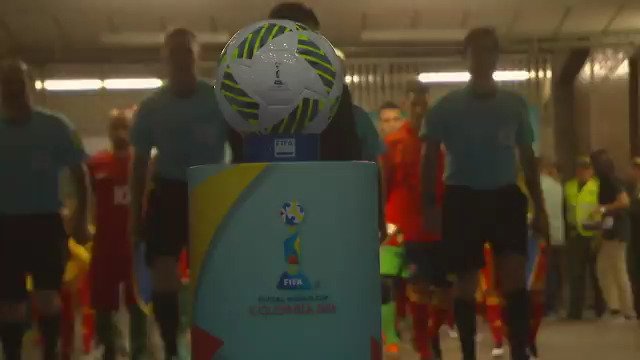If you are new to the phenomenon that is futsal, you may be looking for a summary of the Futsal Laws of the Game without having to read through the full 160 pages.
Well, with the help of FIFA.com, we've covered some of the essential Futsal Laws of the Game below.
Duration of matches
-
Two halves lasting 20 minutes each, with a 15-minute break for half-time.
-
The clock stops whenever the ball goes out of play or there is a break in play.
-
The clock only starts again when play resumes.
The actual length of a futsal match is more like a 45 minute each way football match! Halves can last from around 32-43 minutes per half (based on stats from one team in the FA Futsal Super League last season) and it depends a lot on the teams involved.
Time-outs
- Each team may request a one-minute time-out per half.
- Teams may only call a time-out after notifying the timekeeper and when they are in possession of the ball.
- If a team decides not to use their time-out in the first half, they cannot carry it over to the second.
- There are no time-outs if a match goes to extra time.
Timeouts are a vital part of futsal and can be used tactically or simply to give players a rest.
Rolling substitutions
- Each team starts with one goalkeeper and four outfield players on the pitch.
- Coaches can make as many substitutions as they wish.
- Substitutions can be made without stopping the game.

Infringements and sanctions
- As in football, fouls are penalised with either a direct or indirect free-kick, or a penalty if the foul is committed inside the penalty area.
- Fouls can be sanctioned with red and yellow cards.
- If a player is shown a red card, they can only be replaced on the pitch by a substitute after a mandatory two-minute time penalty. If the team concedes a goal during this time, the substitute may come on before the time penalty has elapsed.
A bit like a sin-bin, but the player in question must leave the arena and may not return to action, but after 2 minutes of playing with a player less, a substitute may enter the fray.
Goalkeepers
- Goalkeepers are free to move anywhere on the pitch but can only handle the ball inside their own penalty area.
- They are allowed to throw the ball from their area into the opposition half.
- When the ball is in their possession, either in their hands or at their feet, they have four seconds in which to play it to a team-mate.
- They may only touch the ball again after an opposition player has touched it or if they advance to the opposition half.
Also, if the goalkeeper is in the opposition half, the above rules don't apply. This allows teams to play "fly-goalkeeper" - a risky, but potentially rewarding tactic. There is no overhead rule either, the ball can go anywhere up to the ceiling of the hall!
Team fouls
- A count is kept of fouls penalised with a direct free-kick or penalty kick in each time period. These offences are called “accumulated foulsâ€.
- When a team commits a sixth accumulated foul, the opposing team is awarded a direct free-kick without a wall on the second penalty mark, which is situated ten metres from goal and four metres behind the first penalty mark.
- If, however, the sixth accumulated foul is committed between the opposition goalline and an imaginary line parallel to the halfway line and passing through the second penalty mark, the free-kick may be taken closer to the goal, in the position where the infringement was committed.
- If a match goes to extra time, the accumulated fouls from the second period continue to accumulate during extra time.
Basically, you have 5 fouls per half. After this, every foul you concede is a penalty from 10 metres. This cuts out "tactical fouls" or at least makes them punishable. Wouldn't a foul count in football be a great addition?!
General
- Futsal is played with a ball that bounces less than a conventional football.
- Goals measure three metres wide and two metres high.
- Matches are officiated by two referees, one on each touchline.
- When the ball goes out of play, play resumes with a kick-in.
- There are no offsides.
For more details on Futsal's rules and regulations, read the latest Laws of the Game document.




